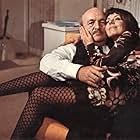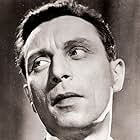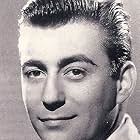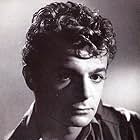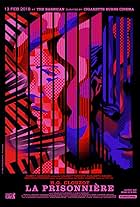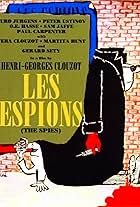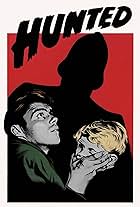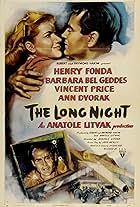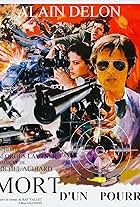Five prisoners, a woman and four men, return to France after WW2. We follow their rocky road to life. It's a movie which consists of five different stories.Five prisoners, a woman and four men, return to France after WW2. We follow their rocky road to life. It's a movie which consists of five different stories.Five prisoners, a woman and four men, return to France after WW2. We follow their rocky road to life. It's a movie which consists of five different stories.
- Awards
- 1 nomination
Photos
Janine Darcey
- Deuxième Sketch: Mary
- (as Jeanine Darcey)
Jean Brochard
- Troisième Sketch: L'hôtelier
- (as J. Brochard)
Jo Dest
- Troisième Sketch: L'Allemand
- (as Jodest)
Léo Lapara
- Troisième Sketch: Bernard le médecin
- (as Leo Lapara)
Noël Roquevert
- Troisième Sketch: Le commandant
- (as N. Roquevert)
Storyline
Featured review
'Retour à la vie' is a very interesting film from many points of view. Made in 1949 it is one of the first films in the history of cinema (maybe the first?) to bring together several segments made by different directors and addressing a common theme. This theme is the return of the French prisoners of war and deportees after many years of captivity during the Second World War, with the personal traumas suffered by each and their effects, but also with how French society knew and could receive them. A few years after the end of the war itself, approaching this theme was an act of courage, because the meeting between those who had returned after years of suffering in which time had seemed to stand still for them and the rest of the French - who had gone through war, occupation and for some also collaboration - was not an easy and necessarily festive one. It is the first fairly frontal approach in many ways to one of the difficult aspects of French history during the Second World War. Discussions of collaborationism and complicity in the Holocaust would come much later, these aspects are not addressed in the film.
The film is divided into 5 independent segments, each depicting the return of a prisoner or deportee. The first segment, directed by André Cayatte, is the one I liked the most. Aunt Emma (Tante Emma) returns after years of imprisonment in Dachau. She is a living skeleton, barely breathing and communicating with difficulty with those around her. The family around her is concerned about the woman's signature on a paper dividing an inheritance. Made with a minimum of cinematic means, the segment brilliantly highlights the contrast between those returned from hell and those left behind, for whom life has continued with its intrigues and pettiness, and gives Bernard Blier the opportunity of making an excellent role as the nephew who succeeds in breaking the wall of silence and communicate with Aunt Emma. The second and fourth segments are placed more in the comic register, probably to balance the gloomy atmosphere of the other stories. Funny in some moments, but less plausible. The most acclaimed role at its time in the film is played (a little too emphatically in my opinion) by Louis Jouvet in the third segment, in which a recently returned ex-prisoner, bearing the physical and mental wounds of captivity, confronts one of the Nazi executioners, now an escaped prisoner, trying to understand the moral decay of the torturers. The dialogue between them seems like a prelude to the 'banality of evil', a concept that Hanna Arendt would describe a decade later. In the final segment, a young Serge Reggiani excels as a prisoner returned home with a German wife who is not accepted in the rural community where he lives. The optimistic note of the ending signals the possibility of reconciliation in Europe that would become a reality in the decades following the war.
The five segments are uneven in artistic level and different in tonality. The best constructed are in my opinion those directed by André Cayatte and Henri-Georges Clouzot. These are also the darkest, confronting more directly the trauma of the prisoners and the chasm between those who returned and those who were waiting (or not) for their return. From a historical perspective but also as a cinematic approach, 'Retour à la vie' is a significant collection, which also says a lot about the war period, but especially about the years that followed.
The film is divided into 5 independent segments, each depicting the return of a prisoner or deportee. The first segment, directed by André Cayatte, is the one I liked the most. Aunt Emma (Tante Emma) returns after years of imprisonment in Dachau. She is a living skeleton, barely breathing and communicating with difficulty with those around her. The family around her is concerned about the woman's signature on a paper dividing an inheritance. Made with a minimum of cinematic means, the segment brilliantly highlights the contrast between those returned from hell and those left behind, for whom life has continued with its intrigues and pettiness, and gives Bernard Blier the opportunity of making an excellent role as the nephew who succeeds in breaking the wall of silence and communicate with Aunt Emma. The second and fourth segments are placed more in the comic register, probably to balance the gloomy atmosphere of the other stories. Funny in some moments, but less plausible. The most acclaimed role at its time in the film is played (a little too emphatically in my opinion) by Louis Jouvet in the third segment, in which a recently returned ex-prisoner, bearing the physical and mental wounds of captivity, confronts one of the Nazi executioners, now an escaped prisoner, trying to understand the moral decay of the torturers. The dialogue between them seems like a prelude to the 'banality of evil', a concept that Hanna Arendt would describe a decade later. In the final segment, a young Serge Reggiani excels as a prisoner returned home with a German wife who is not accepted in the rural community where he lives. The optimistic note of the ending signals the possibility of reconciliation in Europe that would become a reality in the decades following the war.
The five segments are uneven in artistic level and different in tonality. The best constructed are in my opinion those directed by André Cayatte and Henri-Georges Clouzot. These are also the darkest, confronting more directly the trauma of the prisoners and the chasm between those who returned and those who were waiting (or not) for their return. From a historical perspective but also as a cinematic approach, 'Retour à la vie' is a significant collection, which also says a lot about the war period, but especially about the years that followed.
Details
- Release date
- Country of origin
- Official site
- Languages
- Also known as
- Povratak u zivot
- Production companies
- See more company credits at IMDbPro
- Runtime2 hours
- Color
- Sound mix
- Aspect ratio
- 1.33 : 1
Contribute to this page
Suggest an edit or add missing content




